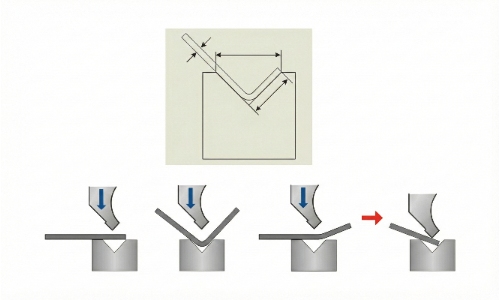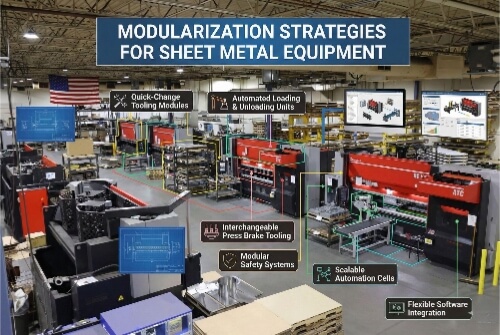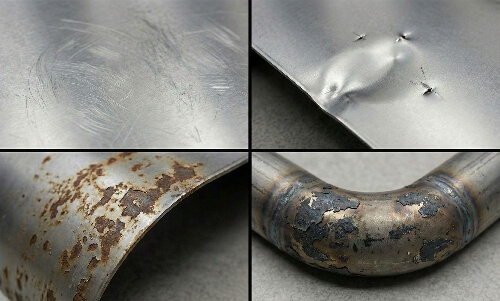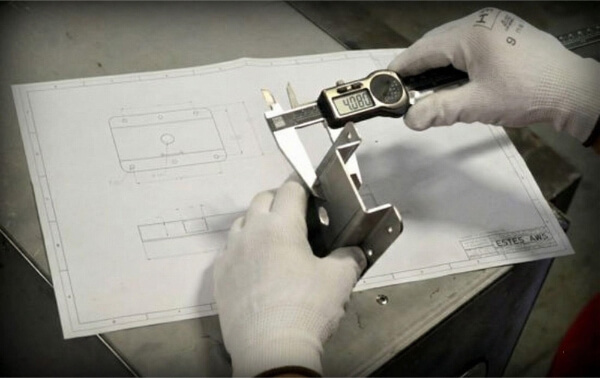가공 작업은 종종 느린 진행 속도, 비용 상승, 공구 마모와 같은 문제에 직면합니다. 많은 엔지니어와 작업장 관리자는 작업 속도를 높이려고 노력하지만, 부품 품질이 떨어질까 봐 걱정합니다. 회의에서 또는 기계 설명서를 훑어보다가 "SFM"이라는 용어를 접한 적이 있을 것입니다. 하지만 별다른 주의를 기울이지 않았을 것입니다. 심지어 이 용어가 꼭 알아야 하는 용어인지 궁금할 수도 있습니다.
SFM의 의미를 이해하지 못하면 기계를 최대한 활용하기가 훨씬 더 어려워집니다. 작동 원리를 이해하면 더 빠르게 절삭하고, 공구를 보호하고, 비용을 관리하는 데 도움이 될 수 있습니다. 다음은 SFM에 대한 명확한 소개와 그것이 가공의 기본과 어떻게 연결되는지 설명합니다.
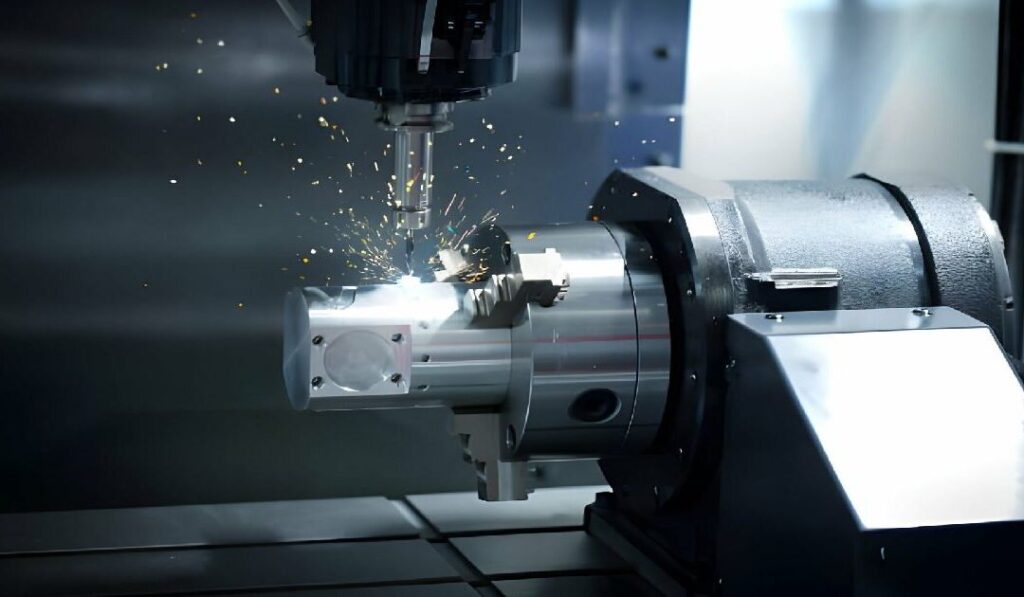
가공에서 SFM이란 무엇인가요?
SFM은 "분당 표면 피트"를 의미합니다. 공구의 절삭날이 재료 표면을 가로질러 얼마나 빨리 움직이는지를 측정합니다. 이 속도는 공구의 회전 속도와 크기에 따라 달라집니다.
절단 도구가 너무 느리게 회전하면 절단이 깨끗하지 않을 수 있습니다. 너무 빠르게 회전하면 공구가 과열되거나 빨리 마모될 수 있습니다. SFM은 적절한 속도를 찾는 데 도움이 되는 숫자를 제공합니다.
이 숫자는 밀, 선반 또는 드릴의 속도를 선택할 때 유용합니다. 도구와 재료 모두에 적용됩니다. 재료마다 잘 절단하고 문제를 방지하려면 서로 다른 SFM이 필요합니다.
가공에서 SFM이 중요한 이유?
올바른 SFM은 공구를 더 오래 날카롭게 유지하고 더 매끄러운 마감을 제공합니다. 또한 과열, 진동 및 부품 품질 저하를 방지하는 데 도움이 됩니다. 잘못된 SFM을 사용하면 시간이 낭비되고 부품이 손상되며 공구가 빨리 마모될 수 있습니다.
모든 재료와 도구 조합에는 권장 SFM 범위가 있습니다. 이 범위를 고수하면 일관성을 유지하는 데 도움이 됩니다. 또한 생산 및 공구 교체 비용도 절감할 수 있습니다.
기공사는 SFM을 사용하여 올바른 스핀들 속도(RPM)를 설정합니다. 공구의 크기와 재료의 유형에 따라 조정합니다. 이를 통해 더 안전하고 안정적인 가공이 가능합니다.
분당 표면적의 기본 사항
SFM은 기공사가 공구가 소재에서 얼마나 빨리 움직여야 하는지 선택할 수 있도록 도와줍니다. 이 섹션에서는 이 기능의 의미와 작업 현장에서 어떻게 사용되는지 자세히 설명합니다.
실용적인 용어로 SFM 정의하기
SFM은 공구의 절삭날이 1분 동안 표면을 가로질러 얼마나 멀리 이동하는지를 보여줍니다. 단위는 분당 피트입니다. 공구의 회전 속도와 공구의 크기에 따라 달라집니다.
예를 들어, 직경이 큰 공구를 사용하는 경우 작은 공구보다 같은 RPM에서 더 많은 표면적을 커버할 수 있습니다. SFM은 공구의 움직임을 작업과 재료에 맞출 수 있도록 도와줍니다.
실제 숫자로 절삭 속도를 제어하는 방법입니다. 기공사는 SFM 차트 또는 공식을 사용하여 각 공구와 재료에 적합한 속도를 선택합니다.
SFM은 커팅 속도와 어떤 관련이 있습니까?
절삭 속도는 재료가 절삭 공구와 만나는 속도입니다. SFM은 이 속도를 측정하는 한 가지 방법입니다. 이는 공구가 부품에 닿는 표면 접촉 지점에 초점을 맞춥니다.
SFM이 너무 높으면 공구가 마모되거나 고장날 수 있습니다. 너무 낮으면 절삭이 거칠거나 느려질 수 있습니다. 좋은 SFM은 더 나은 칩 제어, 더 나은 표면 조도, 더 긴 공구 수명을 의미합니다.
절단 속도는 두 가지 모두에서 필수적입니다. 선회 그리고 갈기. SFM을 사용하면 여러 기계와 작업에서 절단 속도를 쉽게 비교할 수 있습니다.
SFM과 RPM의 차이점
SFM과 RPM은 서로 연결되어 있지만 동일하지는 않습니다. SFM은 공구가 재료 표면을 따라 얼마나 빨리 움직이는지를 측정합니다. RPM은 공구가 1분 동안 회전하는 속도를 측정합니다.
SFM은 RPM과 공구의 직경에 따라 달라집니다. 공구가 클수록 동일한 SFM에 도달하기 위해 더 적은 RPM이 필요합니다. 작은 공구는 그 속도에 맞추기 위해 더 많은 RPM이 필요합니다.
따라서 공구를 변경할 때는 동일한 SFM을 유지하기 위해 RPM을 조정해야 합니다. 그렇기 때문에 기공사는 절삭을 시작하기 전에 두 가지를 모두 계산합니다.
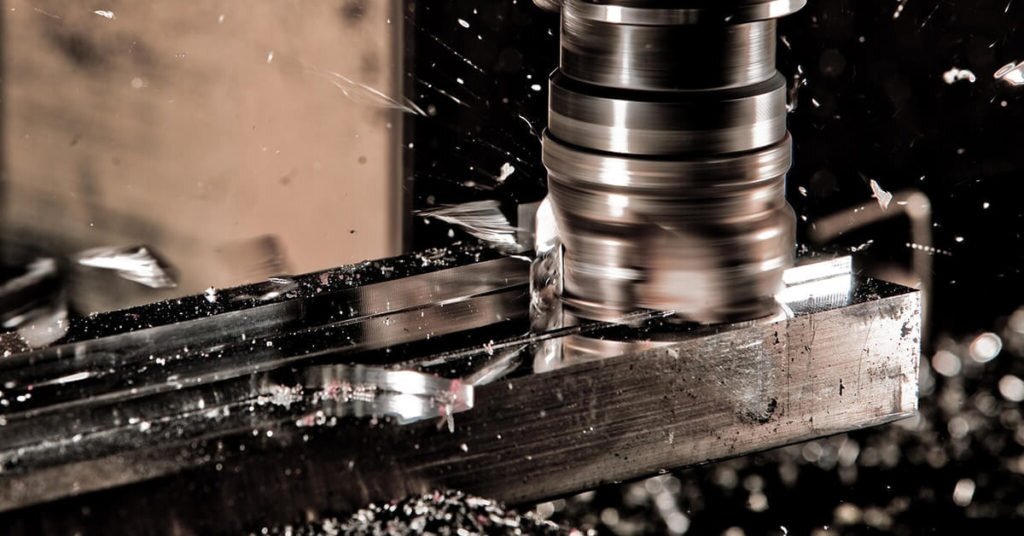
SFM은 어떻게 계산하나요?
실제 업무에서 SFM을 사용하려면 계산 방법을 알아야 합니다. 이 부분에서는 공식, 필요한 입력값, 정확한 수치를 확인하는 방법에 대해 설명합니다.
SFM 공식
SFM의 표준 공식은 다음과 같습니다:
SFM = (π × 공구 직경 × RPM) ÷ 12
이것은 표면 속도를 분당 피트 단위로 나타냅니다. 도구의 원운동을 다루기 때문에 π(약 3.1416)를 사용합니다.
이 공식을 사용하면 도구의 외부 표면에서 절삭날이 얼마나 빠르게 움직이는지 확인할 수 있습니다.
주요 변수: 직경 및 RPM
SFM 공식에는 공구 직경과 스핀들 속도(RPM)라는 두 가지 주요 변수가 있습니다.
- 지름 는 도구의 절삭날 크기(보통 인치 단위)입니다.
- RPM 는 도구가 1분에 몇 번 회전하는지를 나타냅니다.
두 값이 함께 작동합니다. 직경이 클수록 스핀당 더 많은 표면 이동을 의미합니다. RPM이 높을수록 분당 회전 수가 증가합니다. 둘 중 하나를 변경하면 SFM에 영향을 줍니다.
측정 단위
SFM은 다음 단위로 측정됩니다. 분당 피트.
공식이 작동하도록 하려면
- 도구 직경은 인치 단위여야 합니다.
- RPM은 항상 분당 회전 수입니다.
- 인치를 피트로 바꾸려면 12로 나눕니다(1피트에는 12인치가 있으므로).
계산하기 전에 모든 단위가 올바른지 확인하세요. 인치와 밀리미터를 혼용하면 결과가 잘못될 수 있습니다. 항상 입력을 다시 확인하세요.
SFM을 RPM으로 변환하는 방법?
원하는 SFM을 알고 있지만 기계에 맞는 올바른 RPM을 찾아야 하는 경우가 있습니다. 이 섹션에서는 SFM 공식을 역으로 적용하여 적절한 스핀들 회전수를 구하는 방법을 보여줍니다.
SFM을 RPM으로 변환하려면 다음 공식을 사용하세요:
RPM = (SFM × 12) ÷ (π × 공구 직경)
이것은 분당 회전 수로 스핀들 속도를 나타냅니다.
두 가지가 필요합니다:
- 재단 중인 소재의 대상 SFM
- 도구의 지름(인치)
이 공식은 기계를 올바르게 설정하는 데 도움이 됩니다. 잘못된 속도를 사용하면 공구가 마모되거나 부품이 손상되는 것을 방지할 수 있습니다.
권장 SFM이 300이고 도구의 직경이 1인치라고 가정해 보겠습니다. 그렇다면
rpm = (300 × 12) ÷ (3.1416 × 1)
RPM ≈ 1146
따라서 스핀들을 약 1146RPM으로 설정합니다. 이 작업을 자주 수행할 때는 계산기나 SFM 차트를 사용하면 시간을 절약할 수 있습니다.

공작물 소재별 SFM
재료마다 다른 절삭 속도가 필요합니다. 이 섹션에서는 인기 있는 소재에 대한 일반적인 SFM 값과 경도가 수치에 미치는 영향을 보여줍니다.
알루미늄, 강철, 티타늄 및 플라스틱에 이상적인 SFM
각 소재에는 권장 SFM 범위가 있습니다. 이 값은 절삭 속도, 공구 수명 및 부품 정삭의 균형을 맞추는 데 도움이 됩니다.
- 알류미늄: 300~1,000 SFM
알루미늄은 부드럽고 쉽게 절단됩니다. 공구를 손상시키지 않고 고속으로 사용할 수 있습니다.
- 온화한 강철: 100~300 SFM
강철은 알루미늄보다 더 단단합니다. 열 축적과 공구 마모를 방지하기 위해 더 느린 속도가 필요합니다.
- 스테인레스 스틸: 50~200 SFM
스테인리스는 견고하고 빠르게 경화됩니다. 낮은 SFM은 스트레스를 줄이고 공구 수명을 연장하는 데 도움이 됩니다.
- 티탄: 30~70 SFM
티타늄은 강하지만 절단이 까다롭습니다. 열을 제어하고 공구 고장을 방지하려면 느린 속도가 필요합니다.
- 플라스틱: 500 ~ 1500 SFM
플라스틱은 매우 다양합니다. 부드러운 플라스틱은 고속으로 처리할 수 있지만, 단단하거나 충진된 플라스틱은 녹거나 부서지는 것을 방지하기 위해 더 느린 속도가 필요할 수 있습니다.
이는 일반적인 범위입니다. 보다 정확한 수치를 확인하려면 항상 도구 및 재료 사양을 확인하세요.
재료 경도에 따른 SFM 조정
더 단단한 소재는 더 느린 SFM이 필요합니다. 부드러운 소재는 더 높은 SFM을 사용할 수 있습니다. 이 규칙은 공구 손상과 열 축적을 방지하는 데 도움이 됩니다.
예를 들어, 높은 SFM으로 경화강을 절삭하면 공구가 빨리 무뎌질 수 있습니다. 낮은 SFM으로 부드러운 알루미늄을 절삭하면 정삭 품질이 떨어지고 사이클 시간이 길어질 수 있습니다.
공구 코팅과 재료 유형도 중요합니다. 카바이드 공구는 더 높은 SFM을 허용합니다. 고속 강철 공구는 동일한 재료에 대해 더 낮은 SFM이 필요할 수 있습니다.
SFM을 기준으로 조정합니다:
- 재료 경도
- 도구 재료
- 머신 기능
범위의 낮은 끝에서 시작한 다음 절단이 깨끗하고 도구가 시원하게 유지되면 증가합니다.
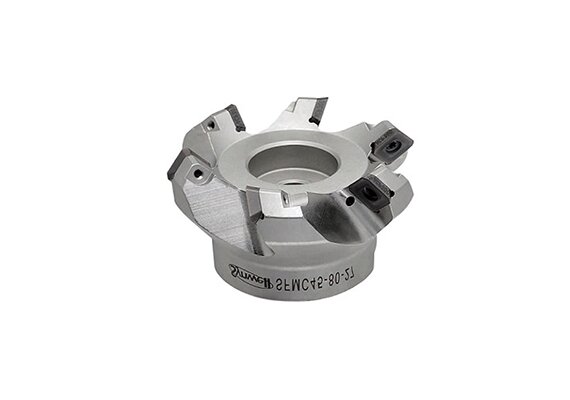
SFM 대 피드 속도
SFM과 이송 속도는 절삭 중에 함께 작동합니다. 이 섹션에서는 이 두 가지가 상호 작용하는 방식과 더 나은 가공 결과를 위해 균형을 맞추는 방법을 설명합니다.
속도와 피드 간의 관계 이해
SFM은 재료를 가로지르는 공구의 가장자리 속도를 제어합니다. 이송 속도는 도구가 재료로 이동하는 속도입니다.
SFM이 너무 높지만 이송이 너무 낮으면 공구가 절삭 대신 마찰될 수 있습니다. 이송량이 너무 높은데 SFM이 너무 낮으면 공구가 깨지거나 과부하가 걸릴 수 있습니다.
깨끗한 절삭과 양호한 칩 흐름을 얻으려면 두 가지가 모두 일치해야 합니다. 불일치하면 공구 마모, 표면 마감 불량 또는 기계 스트레스가 발생할 수 있습니다.
치아 또는 회전당 피드와 SFM의 균형 맞추기
피드 속도는 종종 다음과 같이 제공됩니다:
- 치아당 피드(FPT) 밀링용
- 회전당 피드(IPR) 선회용
전체 피드 속도를 계산하려면
이송 속도 = RPM × 톱니 수 × FPT
회전용:
이송 속도 = RPM × IPR
SFM을 알고 이를 사용하여 RPM을 구하면 이송 속도를 계산할 수 있습니다. 목표는 공구가 문지르거나 과부하가 걸리지 않고 절삭할 수 있도록 이송을 SFM에 맞추는 것입니다.
일반적으로 SFM이 높을수록 이송 속도가 빨라집니다. 하지만 이송은 공구와 기계의 한계 내에서 이루어져야 합니다.
어느 쪽을 우선시해야 할까요?
표면 마감이 중요한 경우 SFM을 설정하는 것부터 시작하세요. 올바른 SFM으로 낮은 피드를 사용하면 표면이 더 매끄러워집니다.
생산 속도가 더 중요하다면 이송 속도에 집중하세요. 공구와 부품이 처리할 수 있는 가장 높은 이송량을 사용한 다음 SFM을 그에 맞게 조정합니다.
공구 마모와 칩 모양을 지속적으로 모니터링합니다. 칩이 너무 섬세하거나 가루가 많으면 이송량이 너무 적을 수 있습니다. 칩이 두껍고 공구에 칩핑이 발생하면 이송량이 너무 많을 수 있습니다.
SFM이 가공 성능에 미치는 영향
SFM은 공구, 부품 및 기계의 성능에 직접적인 영향을 미칩니다. 이 섹션에서는 공구 수명, 표면 마감, 열 및 칩 제어를 어떻게 변화시키는지 살펴봅니다.
공구 수명에 미치는 영향
SFM은 공구의 수명에 큰 영향을 미칩니다. SFM이 너무 높으면 공구 모서리가 너무 뜨거워져 더 빨리 마모됩니다. 너무 낮으면 공구가 절단 대신 마찰을 일으켜 마모를 유발할 수 있습니다.
올바른 SFM 범위를 유지하면 공구를 깨끗하게 절단하는 데 도움이 됩니다. 칩핑이나 파손의 가능성이 줄어듭니다. 또한 공구를 계속 교체할 필요가 없으므로 시간과 비용을 모두 절약할 수 있습니다.
코팅된 도구를 사용하시나요? 코팅 공구는 종종 더 높은 SFM을 허용하지만 칩 제거 및 냉각이 제어되는 경우에만 가능합니다.
표면 마감에 미치는 영향
적절한 SFM은 매끄러운 표면을 만드는 데 도움이 됩니다. SFM이 너무 높으면 진동이나 공구의 휨으로 인해 절단이 거칠어질 수 있습니다. 너무 낮으면 공구에 자국이 남거나 가장자리가 고르지 않을 수 있습니다.
안정적인 SFM은 공구가 올바르게 맞물리게 유지합니다. 끌지 않고 절단합니다. 따라서 특히 미세한 피처 작업에서 마감이 더 깨끗하고 일관되게 유지됩니다.
대부분의 경우 낮은 피드에서 높은 SFM을 사용하면 더 나은 표면 결과를 얻을 수 있지만 여전히 안전한 한도 내에서 유지해야 합니다.
발열 및 칩 제어에서의 역할
SFM이 높을수록 절삭날의 열이 증가합니다. 열은 공구와 재료를 연화시켜 공구가 고장 나거나 절삭 불량을 일으킬 수 있습니다. 절삭유를 사용하거나 더 나은 공구 코팅을 선택하면 이를 줄일 수 있습니다.
SFM은 칩이 깨지고 흐르는 방식에도 변화를 줍니다. 올바른 SFM에서는 칩이 작고 깨끗하게 말려 내려갑니다. 잘못된 SFM에서는 칩이 달라붙거나 막히거나 긴 줄을 형성하여 부품을 손상시킬 수 있습니다.
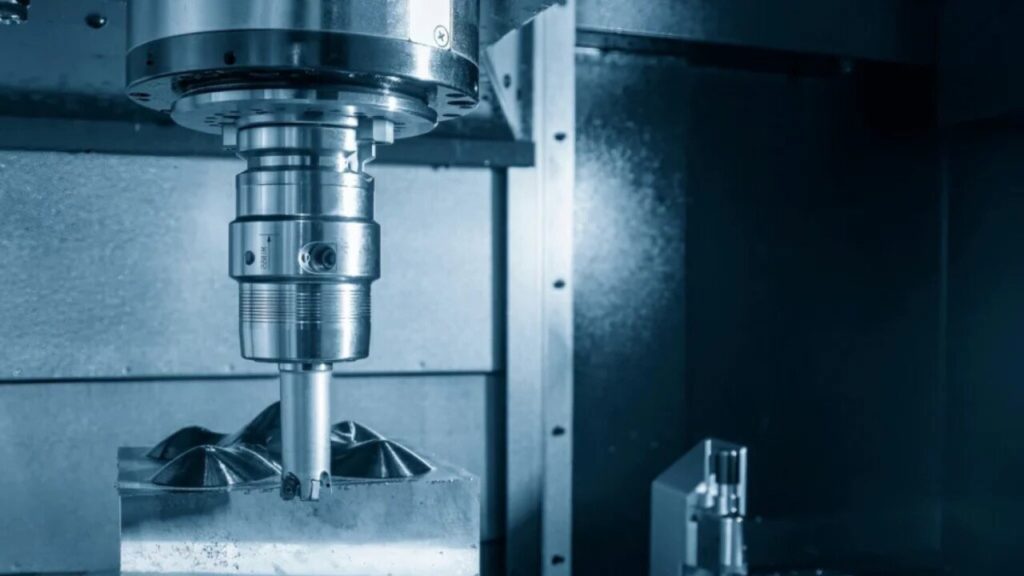
SFM 및 머신 제한 사항
계산이 정확해 보여도 컴퓨터가 그 숫자를 실행하지 못할 수도 있습니다. 이 섹션에서는 기계의 한계가 SFM 선택에 미치는 영향과 이론과 현실이 일치하지 않을 때 어떻게 해야 하는지에 대해 설명합니다.
최대 RPM 및 스핀들 출력 제약 조건
모든 기계에는 최대 RPM 및 스핀들 출력 제한이 있습니다. 원하는 SFM에 대해 계산된 RPM이 너무 높으면 기계가 이에 도달하지 못할 수 있습니다.
예를 들어, 소형 공구가 올바른 SFM에 도달하려면 높은 RPM이 필요합니다. 그러나 일부 기계는 최대 6,000 또는 8,000RPM에서 작동합니다. 이로 인해 이상적인 SFM 이하로 작동해야 할 수 있습니다.
스핀들 파워도 중요합니다. 큰 공구나 단단한 소재에 높은 SFM을 사용하려면 기계가 제공할 수 있는 토크보다 더 많은 토크가 필요할 수 있습니다. 충분한 동력 없이 너무 빠르게 작동하면 스핀들이 멈추거나 모터가 손상될 수 있습니다.
안전을 위해 SFM을 언제 낮춰야 하나요?
SFM을 낮추면 공구 마모, 열, 진동을 줄일 수 있습니다. 현명한 선택입니다:
- 잡음이 들리거나 도구 표시가 보입니다.
- 자료가 복잡하거나 일관성이 없는 경우
- 도구가 길거나 얇아서 휘어질 수 있습니다.
- 설정이 불안정하거나 부품 고정이 약합니다.
안전이 최우선입니다. 확실하지 않은 경우 낮은 SFM으로 시작하여 서서히 높이세요. 칩은 짧게, 모서리는 깨끗하게, 공구는 시원하게 유지하세요.
공작 기계 성능과 이론적 계산 비교
SFM과 RPM에 대한 공식은 이상적인 수치를 제공합니다. 하지만 기계에는 한계가 있습니다 - RPM 제한, 고속에서의 출력 저하, 강성 문제.
이론적인 수치는 계획에 도움이 되지만, 실제 절삭은 기계의 강점과 일치해야 합니다. 항상 작은 절삭을 테스트하고, 기계의 소리를 듣고, 칩 모양과 공구 마모를 확인합니다.
또한 구형 기계는 고속에서 엄격한 공차를 유지하지 못할 수 있습니다. 이러한 경우 SFM을 약간 줄이면 더 안정적이고 반복 가능한 결과를 얻을 수 있습니다.
SFM의 CNC 가공
CNC 작업에서 SFM은 단순한 숫자가 아니라 프로그램의 일부가 됩니다. 이 섹션에서는 SFM이 G코드에 어떻게 들어맞는지, 그리고 소프트웨어가 이를 올바르게 설정하는 데 어떻게 도움이 되는지 설명합니다.
G-Code에서 SFM 프로그래밍
CNC 기계는 SFM을 직접 읽지 않습니다. 공구 직경을 사용하여 SFM에서 계산된 RPM을 사용합니다. 대부분의 프로그래머는 코드를 작성하기 전에 SFM 대 RPM 계산을 수행합니다.
G-코드에서 G97(일정한 RPM) 또는 G96(일정한 표면 속도)을 사용하여 스핀들 속도를 입력합니다.
- G96 기계가 고정된 SFM을 유지하도록 설정합니다. 공구 위치 및 직경에 따라 RPM을 자동으로 조정합니다.
- G97 고정 RPM을 설정합니다. 직경이 변경되더라도 절단 중에는 변경되지 않습니다.
예시:
G96 S250 M03(세트 250 SFM, 스핀들 켜짐)
직경이 변하는 선삭 작업에 유용합니다. 기계는 표면 속도를 일정하게 유지하기 위해 RPM을 조정합니다.
밀링의 경우 대부분의 사람들이 G97을 사용하고 수동으로 RPM을 계산한 다음 프로그램에 연결합니다.
SFM 최적화를 위한 소프트웨어 도구
많은 CAM 시스템과 계산기가 올바른 SFM을 설정하는 데 도움을 줍니다. 공구 크기, 소재 및 기계 사양을 입력하면 됩니다. 소프트웨어가 표준 절삭 데이터를 기반으로 속도와 이송을 제안합니다.
인기 있는 도구는 다음과 같습니다:
- 공구 제조업체 앱(예: Kennametal, Sandvik)
- 퓨전 360, 마스터캠, 솔리드캠과 같은 CAM 소프트웨어
- 온라인 SFM 계산기
이러한 도구는 추측을 피하는 데 도움이 됩니다. 정확도를 높이고 작업 현장에서의 시행착오를 줄여줍니다. 일부는 공구 마모 또는 부품 형상을 기반으로 피드를 실시간으로 업데이트하기도 합니다.
결론
SFM(분당 표면 피트 수)은 가공의 핵심 부분입니다. 절삭 공구가 재료 표면에서 얼마나 빨리 움직이는지 알려줍니다. SFM은 절삭 속도, 공구 수명, 표면 정삭 및 열의 균형을 맞추는 데 도움이 됩니다. 올바른 SFM은 공구 크기, 소재 유형 및 기계 한계에 따라 달라집니다. RPM과 이송 속도를 계산하는 데 사용되며 CNC 프로그래밍 및 칩 제어에서 중요한 역할을 합니다.
다음 가공 프로젝트에 적합한 절삭 속도를 선택하는 데 도움이 필요하신가요? 팀에 문의-빠르고 안정적인 제조 솔루션으로 귀사의 제품 목표를 지원합니다.
안녕하세요, 저는 케빈 리입니다

지난 10년 동안 저는 다양한 형태의 판금 제작에 몰두해 왔으며 다양한 워크숍에서 얻은 경험에서 얻은 멋진 통찰력을 이곳에서 공유했습니다.
연락하세요

케빈 리
저는 레이저 절단, 굽힘, 용접 및 표면 처리 기술을 전문으로 하는 판금 제조 분야에서 10년 이상의 전문 경험을 갖고 있습니다. Shengen의 기술 이사로서 저는 복잡한 제조 문제를 해결하고 각 프로젝트에서 혁신과 품질을 주도하는 데 최선을 다하고 있습니다.

